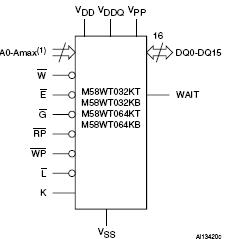M58WT032KT: Features: ` Supply voltage VDD = 1.7 V to 2 V for program, erase and read VDDQ = 2.7 V to 3.3 V for I/O buffers VPP = 9 V for fast program` Synchronous/asynchronous read Synchronous burst read mod...
floor Price/Ceiling Price
- Part Number:
- M58WT032KT
- Supply Ability:
- 5000
Price Break
- Qty
- 1~5000
- Unit Price
- Negotiable
- Processing time
- 15 Days
SeekIC Buyer Protection PLUS - newly updated for 2013!
- Escrow Protection.
- Guaranteed refunds.
- Secure payments.
- Learn more >>
Month Sales
268 Transactions
Payment Methods
All payment methods are secure and covered by SeekIC Buyer Protection PLUS.

 M58WT032KT Data Sheet
M58WT032KT Data Sheet







